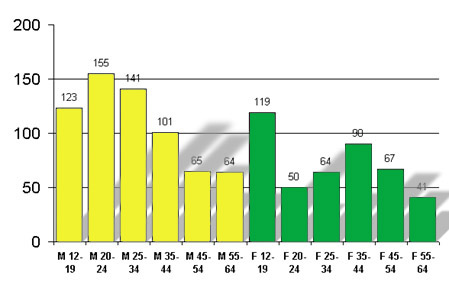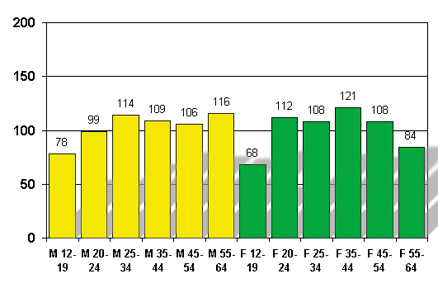
(photo credit: Roland Soong)
The Internet for Entertainment & Information

(photo credit: Roland Soong)
The Internet is a means by which people can gain access to a bundle of services: the World Wide Web, e-mail, IRC, news groups, list groups, file transfers, gopher, etc. Within each of these services, there are different products. Thus, within the World Wide Web, there are millions of web sites offering all types of contents. Since an Internet user does not have the time to access all these services and content, they must necessarily make choices. Their decisions reflect their personal preferences and needs.
According to the field study of J. Eighmey ("Profiling User Responses to Commercial Web Sites." Journal of Advertising Research, 37, 2 (May-June 1997), 59-66), entertainment when accessing a site plays the most important role. The information offered by the site is the second most essential factor. Finally, a less postive fact was that none of the investigated sites "succeeded in creating a context and sense of community needed to build a continuing relationship with Web site users."
We will refer to some survey data collected in the TGI Brasil study. This is a survey of 10,103 persons between the ages of 12 and 64 conducted in 1999 by IBOPE in Brazil. Among these respondents, there were 1,089 home Internet users which is projected to 2,546,000 persons in the measured universe of 51,917,000 persons. These respondents were shown a list and asked to indicate whether they used the Internet for these reasons. Overall, 40% of the home Internet users indicated that they used the Internet for entertainment and 73% of them said that they used the Internet to obtain information. Also, 32% of the home Internet users indicated that they used the Internet for entertainment as well as information.
In the next graph, we break down the 40% of entertainment users by age/sex. The data are presented in the form of indices, where the index for an age/sex group is defined as 100 times the response for that group divided by the value of 40% for the total group. For example, 61% of men 20-24 indicated that they used the Internet for entertainment, which is why the index is 100 x 61 / 40 = 155 in the graph. An index of greater than 100 means that more people in the group use the Internet for entertainment; an index of less than 100 means that fewer people in the group use the Internet for entertainment; and an index of 100 means that the group matches the overall level for all persons. According to the graph, the entertainment users on the Internet are more likely to be men between 12 to 34 years old and female teenagers (12-19 years old).
Using the Internet for Entertainment, by Age/Sex Groups

(source: TGI Brasil, IBOPE)
In the next graph, we break down the 73% of information users by age/sex. According to this graph, the information users on the Internet are more likely to be male 25-64 and female 20-54.
Using the Internet for Information, by Age/Sex Groups

(source: TGI Brasil, IBOPE)
Here we seemed to have set up the premise that entertainment and information are mutual exclusively categories. In truth, they should not be. The best information can be entertaining, and the best entertainment can be informative.
![]()
WWW LINKS
PRINT REFERENCES
(posted by Roland Soong on 7/30/00)
(Return to Zona Latina's Home Page)